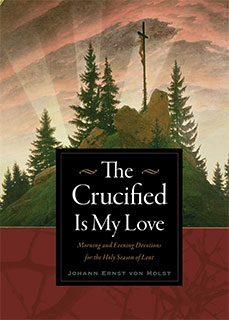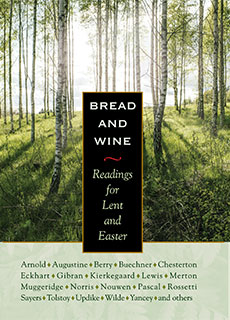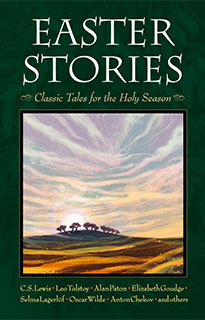Subtotal: $
Checkout-

Michael and Margaretha Sattler
-

The Pen and the Keyboard
-

My Fearless Future
-

Covering the Cover: School for Life
-

The Community of Education
-

Family and Friends: Issue 19
-

Verena Arnold
-

Tundra Swans
-

What’s the Good of a School?
-

On Praying for Your Children
-

The World Is Your Classroom
-

The Good Reader
-

Kindergarten
-

Should Christians Abandon Public Schools?
-

Why I Homeschool
-

The Children of Pyongyang
-

Cancilde and Emmanuel

Next Article:
Explore Other Articles:
The first weeks after New Year are a prelude to the holiest time of the Christian calendar – Lent, Passion Week, and Easter. In preparing for this season each year, we on the Plough staff find ourselves turning repeatedly to a handful of proven spiritual classics. Among them are three devotional volumes from Plough’s own backlist. These titles may be familiar to some readers, but for others will (we hope) come as a welcome discovery.

Johann Ernst von Holst’s The Crucified Is My Love is a small treasure from 1895, first published in English in 2017. The author, a Lutheran pastor from the Baltic town of Wenden (now Cēsis, Latvia), wrote these morning and evening Lenten meditations for his German-speaking congregation. Each short reading builds a vivid, detailed account around a central Gospel verse.
Valued for the single-hearted love it expresses for the suffering Christ, von Holst’s book was passed down by his parishioners to their descendants through four generations. Eighty-five years after it was written, a copy came into the hands of a Plough editor, Kathleen Hasenberg, whom we have to thank for her sensitive translation.

Bread and Wine: Readings for Lent and Easter comes in a sturdy hardcover that can withstand forty-six days of lying open around the house. There are readings for each day from Ash Wednesday to Holy Saturday, grouped into four sections: “Invitation,” “Temptation,” “Passion,” and “Crucifixion.” For Easter itself and the weeks following it, twenty-six additional readings take the reader on into the victory of the risen Christ.
The book’s spirit is summed up in the introduction: “Lent is meant to be the church’s springtime, a time when, out of the darkness of sin’s winter, a repentant, empowered people emerges. No wonder one liturgy refers to it as ‘this joyful season.’”
Bread and Wine features selections from beloved spiritual writers ancient and modern – including Saint Augustine, Thomas à Kempis, G. K. Chesterton, Dietrich Bonhoeffer, Fleming Rutledge, and N. T. Wright – as well as poetry by John Donne, Christina Rossetti, John Updike, Geoffrey Hill, and others.

The final title, Easter Stories: Classic Tales for the Holy Season, isn’t a devotional reader, strictly speaking. Yet for young families especially, this anthology of short stories can make a cherished companion in the weeks preceding Easter and during the holiday itself. Some of these stories are perennial childhood favorites that come alive when read aloud to the whole family, such as Oscar Wilde’s “The Selfish Giant.” Others are classic works of literature for teenagers and adults, including selections by Leo Tolstoy, Anton Chekhov, C. S. Lewis, and Elizabeth Goudge. Either way, what unites the stories in this illustrated volume is a tenderness and reverence for the mystery of death and resurrection that strikes the heart anew each year.
Already a subscriber? Sign in
Try 3 months of unlimited access. Start your FREE TRIAL today. Cancel anytime.



























